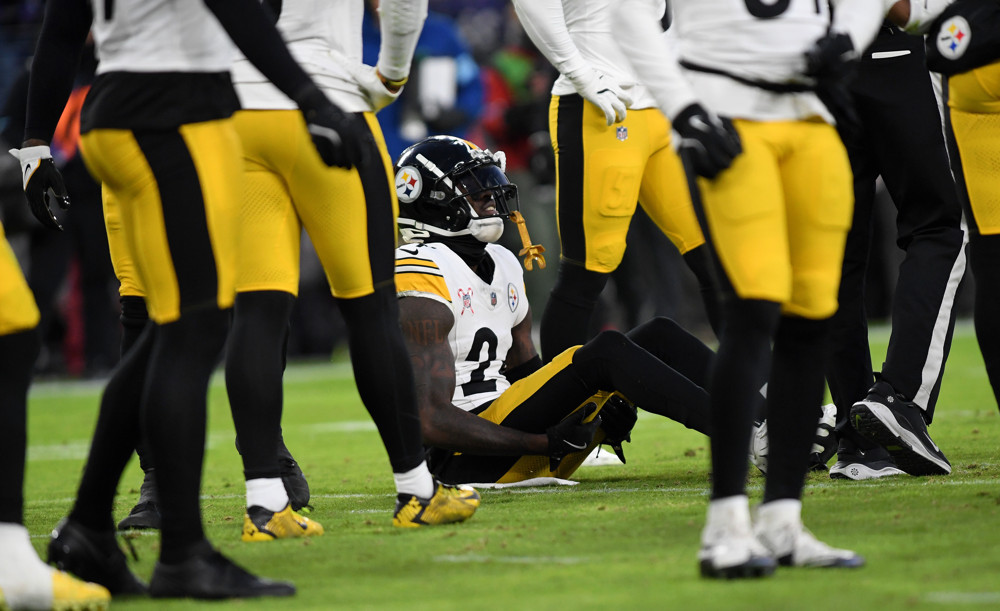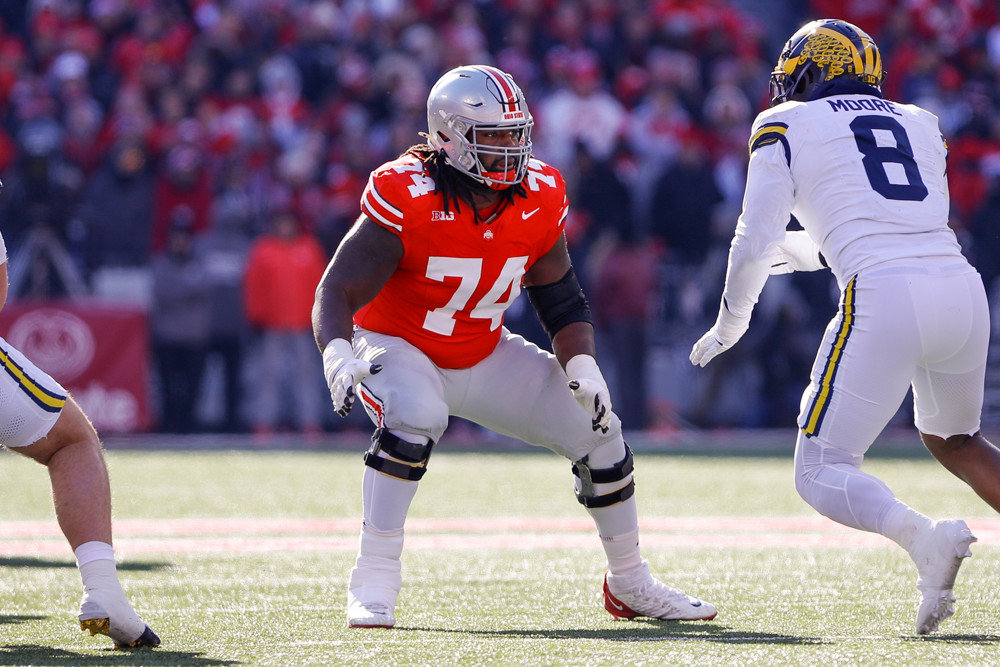I’m not quite sure how we got here.
In the summer of 2023, Jonathan James McCarthy, 22, of Evanston, Illinois, was not a player very many people considered to be a future first-round pick. Third-wheeling it on Michigan’s run-first national championship team was probably part of his rise, and he appeared 30th on the consensus mock draft five days after the Wolverines hoisted the CFP Trophy. He’d eventually be taken 10th overall by the Vikings and go on to miss his entire rookie season with a torn right meniscus, but you probably already know all this.
What you might not know is: What has inspired the bizarre mythmaking about this particular player? And, furthermore, is there any reason to believe he’ll ever be any good?
Let’s first set the stage here. Amongst 37 quarterbacks with 100+ attempts, McCarthy currently ranks 33rd in passing Total Points per play with a number that rounds to 0 from the nearest hundredth.
What this means, effectively, is that he has been a replacement-level passer through the first four games of his career (minimum 20 snaps each game), something that can be said of just 24 other quarterbacks in the SIS era (2015-present).
This list is filled with names like Nathan Peterman, Josh Rosen, Paxton Lynch, DeShone Kizer, Dorian Thompson-Robinson, Ryan Finley, and Mitch Trubisky. Just two of them ever became long-term NFL starters: Jared Goff and Josh Allen, with the former playing on a hapless Rams team under Jeff Fisher and the second being a consensus developmental guy with freakish physical ability. Neither of those things can be said about McCarthy.
The highs have been low and the lows have been really low. On plays with an above average Total Points value, he ranks 27th on a per-play basis; on plays with a zero or negative Total Points value, he ranks 34th. Furthermore, his overall positive play rate ranks 32nd at 38%. If your starting quarterback is going to be inconsistent down-to-down with low valleys, these are not the peaks you want.
In aggregate, this produces a quarterback who’s 35th in both boom rate (producing high EPA plays) and bust rate (limiting low EPA plays).
McCarthy has the highest sack rate in the NFL at 11% and the second-highest interception rate at 6%. If those hold, he would be the only player in the SIS era (2015-present) with a sack rate above 10% and an interception rate above 5% in a single season. Before this year, only 11 players ever had a season in which their sack rate was above 8% and their interception rate was above 4%. The last player to do that was Will Levis last season. He was subsequently replaced after just 21 starts.
It’s not readily apparent what he has to hang his hat on. I’ve seen people claim he’s a good athlete and that he’s been good under pressure, but the numbers certainly don’t bear that out. He turns pressures into sacks 26% of the time, 3rd-worst in the league, and his Independent Quarterback Rating under pressure of 32.5 is 2nd-worst in the league. The only QB with a lower positive play rate on scrambles this year (minimum 5 attempts) is his teammate, Carson Wentz.
McCarthy’s expected on-target throw rate +/-, which accounts for factors like throw depth, is the worst in the NFL at an atrocious -13%. (For context, -5% is enough to make you one of the worst any given year).
He barely has a dozen reps of quick game this year, so who’s to say if he’s any good at something his coaching staff isn’t really asking him to do much of? Quick game is typically thought of as easy-to-execute but requires quick processing, touch, and good ball placement, and I think people should be reluctant to prescribe it as a cure-all for struggling, young quarterbacks.
He has the worst Total Points per play on deep throws (20+ yards) besides a 32-year-old Marcus Mariota.
So, what’s the excuse? Kevin O’Connell just won Coach of the Year, if that means anything to you.
The three-deep at wide receiver is one of the best in the NFL with Justin Jefferson, Jordan Addison, and Jalen Nailor; as a group, they rank 6th among top receiving trios in receiving Total Points per route run.
The offensive line is missing Ryan Kelly but has four other veterans holding down the fort, and that unit ranks 19th in pass blocking Total Points per snap. Their blown block rate is 9th-worst, but that’s counterbalanced by the fact that McCarthy faces one of the slowest average times to pressure in the NFL and is just one of four QBs who average 3 seconds or more before pressure arrives on their pressured dropbacks.
It is true that there are things advanced stats can’t capture in McCarthy’s game, like his pre-snap cadence being so bad that the Vikings committed eight false starts at home, the most by any home team in 16 years, per ESPN’s Kevin Seifert.
More seriously, a lot of these splits are admittedly small sample or, in the case of throwing performance vs pressure, statistically volatile. The point is more so that the film says he’s been bad, the stats say he’s been bad, and that there’s currently nothing encouraging to point to outside of the fact that it’s only been four games.
People say that ‘stats don’t lie,’ but if you do enough filtering, you can usually find a split that reflects well on a player. That’s been really difficult to do with McCarthy. For example: on un-pressured throws between 10-19 yards – something a quarterback should look really good at under Kevin O’Connell – he’s 38th in Total Points/pass among 39 quarterbacks with 10 or more attempts.
We’ve seen people make points about his rookie year injury and even about his recent fatherhood, but caveats like that aren’t that unique, and even with that it should be easier to find a slice of success from his statistical record. We’ve looked at this from a few different angles that should afford him some grace, but so far there isn’t anything too encouraging. All Vikings fans really have right now is mythmaking and wishcasting positive regression.


